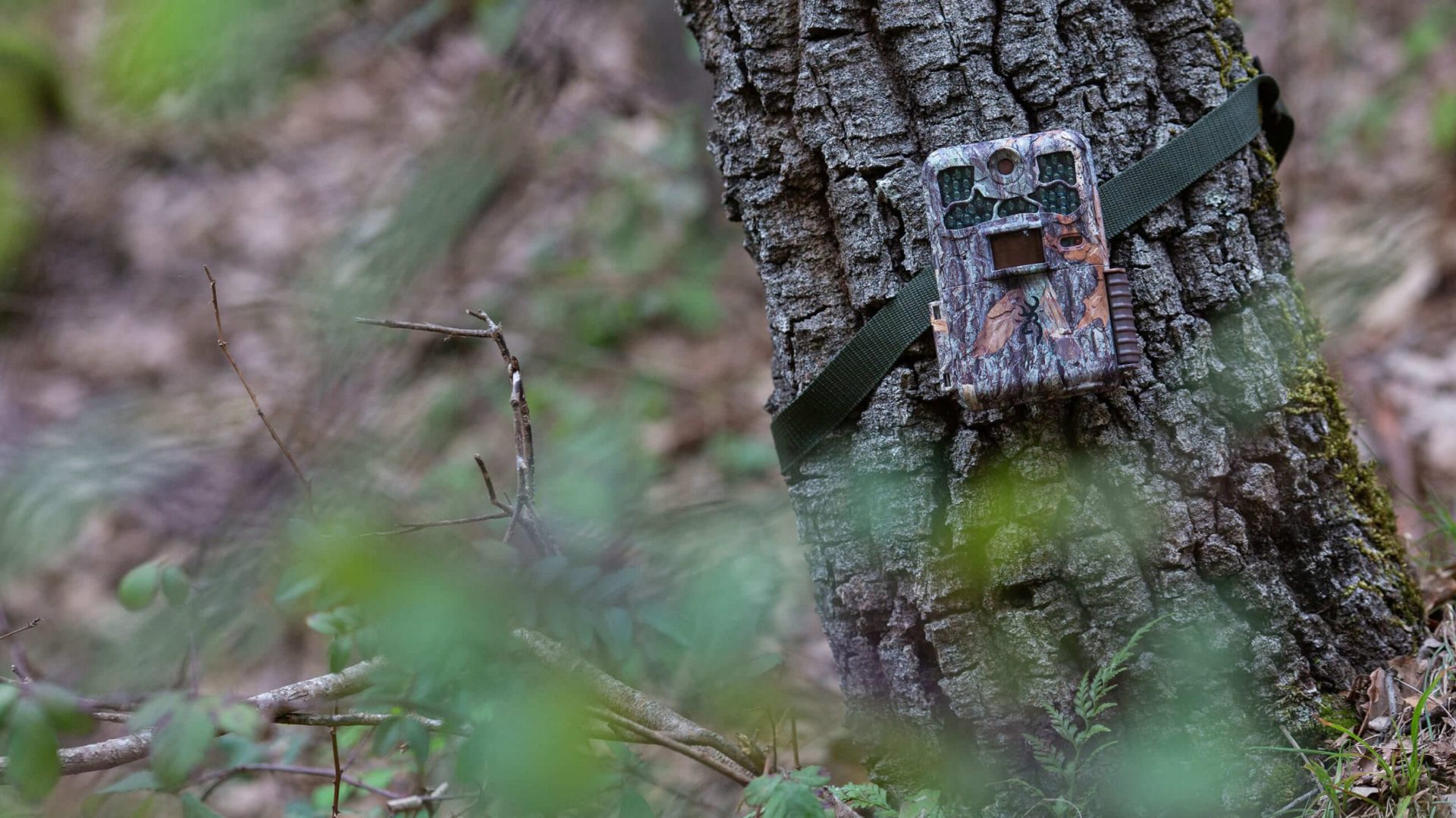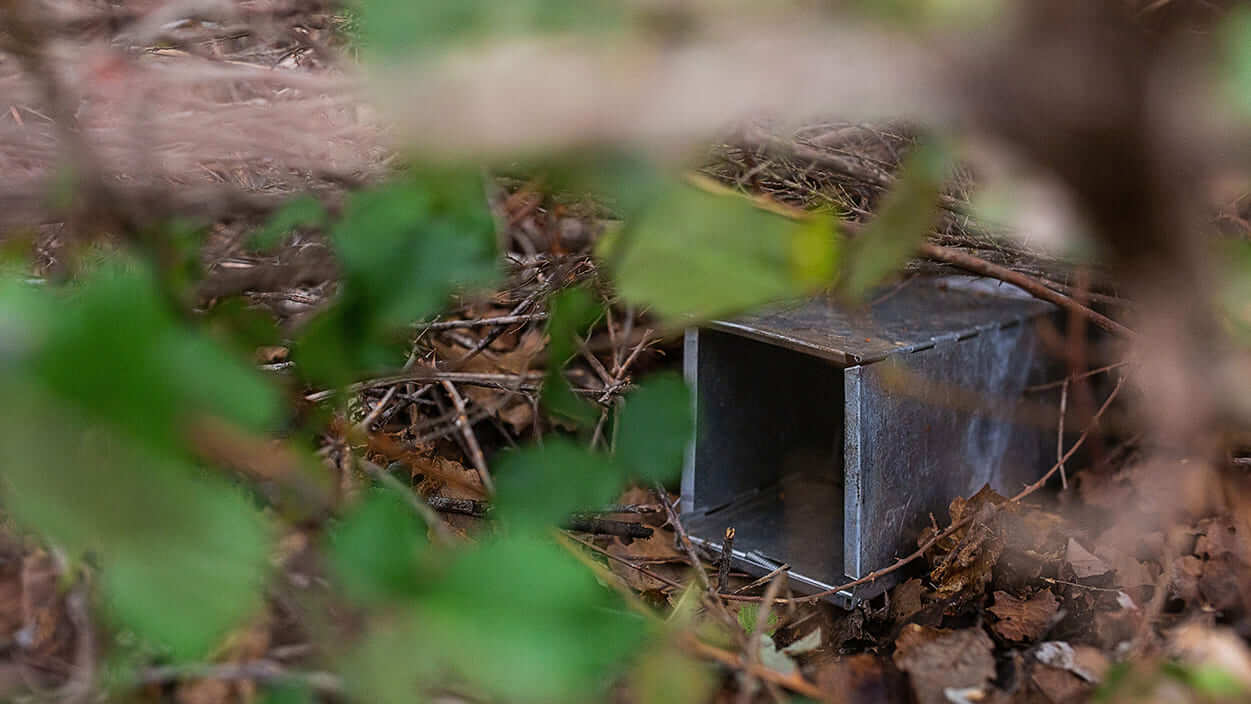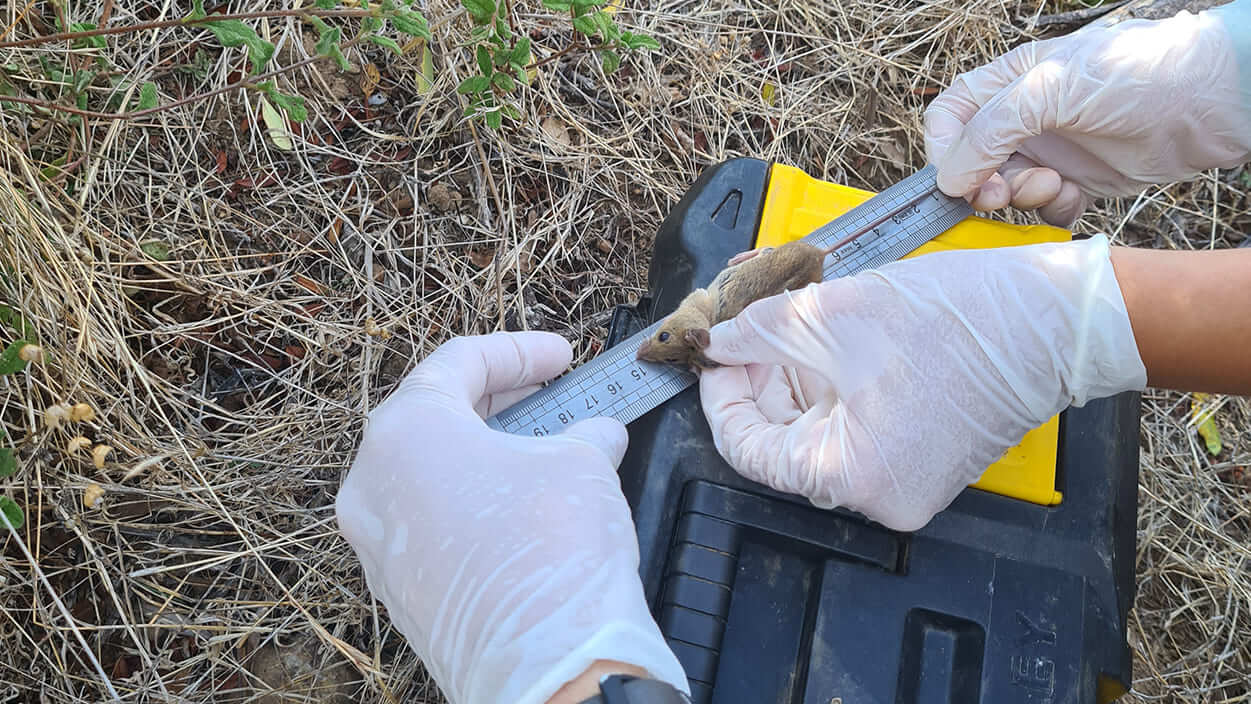How do we know which species exist in Portugal, in which regions they are found, and how abundant they are? Finding out this information in perfect detail for the whole of the country is an impossible task, but there are various approaches and types of equipment that help to identify which species occur in certain sampling areas. Learn about some examples of how mammals are detected; from photo trapping to mist nets.
Depending on the order, family, and even species of mammal being studied, there are different techniques and tools that can help estimate their presence and abundance in a given territory. One of the most commonly used methods for identifying medium and large-sized mammals, such as wolves, foxes, deer, or wild boar, is photo trapping.
By using photo trapping – camaras automatically triggered by heat and movement -, it is possible to photograph or film the animals without creating any disturbances. It is even possible to capture footage of nocturnal animals using this method, which, in the case of mammals, are the vast majority. The cameras, which are relatively straight-forward to get hold of nowadays, have a strap which enables them to be attached to trunks or branches and the type of recording required—photo or video—is defined in advance.
Other techniques can be used to identify smaller mammals whose characteristics are more difficult to discern using photography or video, either individually or in a supplementary way to photo trapping. This is particularly the case with capture traps. Despite their name, they are harmless: they resemble small cages, where the door closes when the animal enters. Among different models, Sherman traps (for smaller animals such as mice) and Tomahawk traps (for slightly larger animals such as wild cats) are the best known.
Unlike camara trapping, that can collect images of several animals (and different species) in its ‘field of view’, each trap only collects one mammal at a time and requires more regular monitoring. However, with a trap it is possible to observe, weigh, and measure the animal, as well as collect other biometric data. If necessary, it also makes it possible to mark it (by placing a microchip, ear tag, or tattoo) and collect biological samples (for example, blood or hair) to find out more about it.
Different approaches serve different objectives, but when the purpose is to deepen our knowledge of a given species and its populations, these techniques and equipment can be combined and many others can be added to them. These range from the observation of structures that indicate the presence of animals, such as their nests, to the collection of samples of droppings or even of saliva left on prey remains (which makes it possible to identify who captured it). Genetic analysis of these samples may provide clues to rather more complex issues, such as gene flow (crossbreeding) between different populations.
The combination of different techniques has also helped to identify flying mammals, such as bats. Direct observation, vocalisation capture using an ultrasound detector and a digital recorder, for example, and direct capture or capture using instruments such as mist nets, canopy nets, or harp traps are examples. When using the latter method, while attempting to pass through wires, bats fall into collecting bags.
Mist nets are one of the tools most used for studying bats (and also birds). They are made of a very fine mesh and are easily placed between trees at a short distance from the ground, becoming almost invisible and trapping animals that pass through them. The method involves regular monitoring to prevent bats breaking free or injuring themselves.
Unfortunately, these same nets, which provide an aid to the knowledge brought to us by biologists, ornithologists, and conservationists, have been used in some countries for the illegal capture of bats and birds, which are then sold on the black market.





